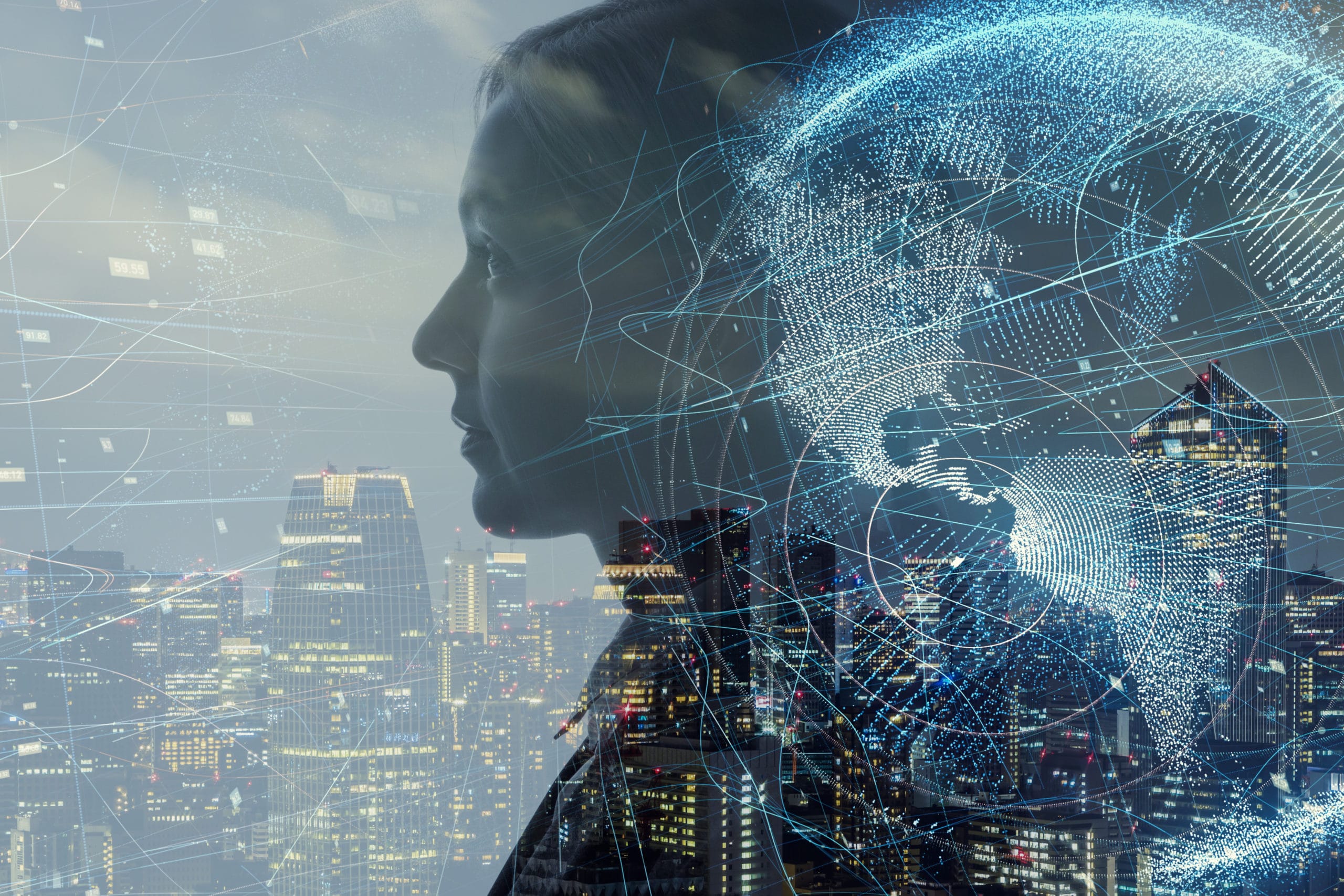Supercomputers playing chess and robotic dogs generate headlines, but the bigger impact of artificial intelligence is in industrialized settings, doing real work.
For casual observers, artificial intelligence remains science fiction and its big success seems to be in beating humans at chess and the strategy game of go. We see it in videos of dancing robots and we imagine a future of autonomous cars. But AI is making a difference today, and in more than games. It is transforming traditional industries such as agriculture, manufacturing, logistics, and healthcare.
AI helps us identify patterns and relationships in the digital and physical world all around us and is providing new solutions to old challenges. Machines powered by AI are helping us diagnose strokes faster and more accurately, they are helping us weld steel parts with higher quality and consistency, and they are helping us sort waste and improve recycling rates. They are even improving our ability to analyze and verify carbon sequestration projects.
While the dancing robots can capture the imagination of casual observers, investors helping to fund new advances are generally focused on applications that improve productivity, safety or minimize their carbon footprint.
AI and Automation makes us more productive
Monitoring government policy is critical for many entities, including government agencies themselves, think tanks, lobbyists and corporations, because changes to government policy can impact their businesses. Effective monitoring requires the monitoring of hundreds of data sources and teams of professionals to analyze and form conclusions from government actions. Navigating this ecosystem efficiently and cost-effectively is a real challenge.
Enter FiscalNote, the AI and natural language processing solution that empowers more than 4,000 of its clients to more efficiently access and analyze public policy matters and associated risks. FiscalNote’s technology aggregates data and information from a myriad of sources such as memos, announcements, speeches, spreadsheets of data, and more. It then creates a single system of record enabling clients to more efficiently and accurately track relevant matters. FiscalNote is providing a unified database, fed with relevant and timely data — all powered by AI.
The demand for labor in agriculture can change dramatically with the seasons. Large farms are typically dependent on itinerant workers who move from region to region to meet peak harvest demands. Managing that labor has always been a challenge – particularly against a full employment backdrop – but climate change (with extreme weather events), tariffs, and the recent supply-and-demand shocks triggered by the pandemic have greatly exacerbated labor shortages.
Those farms that can leverage AI-driven automation have a distinct competitive advantage. Farmwise, for instance, uses computer vision to analyze individual plants and eliminate weeds without herbicides or manual labor. The solution delivers a new level of reliability and precision to farmers, while increasing yields, decreasing pollutants, and providing field data that growers can use to continuously improve their operations.
AI and Automation can improve safety
Few typically associate waste management with cutting-edge technology. But the field is dangerous – making the top ten for both fatal and nonfatal injuries, according to the U.S. Bureau of Labor Statistics – and waste-processing facilities struggle to retain their workforce due to the occupational hazards. Fumes, toxic liquids, and sharp objects are among the evils and in some cases, municipalities have had to shut down facilities altogether due to air quality.
Everest Labs leverages artificial intelligence to automate this dirty job, using a robotic arm to identify and pick items from conveyor belts as waste flows by. Computer vision enables the system to identify different materials, separating the waste stream and improving recycling rates. Plastics alone have nearly a dozen different classifications, each with independent recycling streams. Manual operators struggle to sort these correctly, which speaks to why less than one tenth of plastic waste in the U.S. is recycled.
AI and Automation will help in our fight against climate change
AI and machine learning technology can recognize trends that aren’t discernible to the human eye. Pachama, which recently received an investment from Amazon, identifies trends in forests to facilitate marketplace transactions of carbon credits. The technology analyzes images of forests from aircraft and satellites, providing estimates of carbon density. The company’s technology is helping build trust in the carbon marketplace that’s needed for corporations and individuals to purchase verified carbon credits to offset their own footprints. The system can also be used to identify deforestation as it happens.
AI and Automation help discover new solutions to traditional problems
Improving on-demand medical deliveries to rural communities can impact the lives of millions of people, and once again it’s artificial intelligence that is providing a real solution.
Wingcopter provides worldwide drone solutions for commercial and humanitarian applications to improve and save lives. Deliveries are measured in minutes, not hours or days, by drones powered by batteries and navigated by autonomous systems. It’s a more effective solution that leaves a smaller carbon footprint, eliminates the risk to transportation workers (the No. 6 most dangerous profession according to BLS data), and it is saving lives. Moreover, automated drone deliveries can streamline the entire supply chain.
Challenges brought about by COVID-19, from stay-at-home orders to social distancing, have illustrated the need for traditional corporations to adopt AI to improve safety, grow productivity and to support innovation. These applications are also showing considerable staying power, with many citing the pandemic as an accelerator of this inevitable adoption.
The attention of casual observers will continue to focus on automation’s high-profile moonshots such as autonomous vehicles, air taxis, and humanoid avatars with super-human strength. In the meantime, challenges in more traditional industrial settings will be solved by AI. PwC has estimated that by 2030 AI will add approximately $16 trillion to global GDP, 40% of which will come from productivity gains.
It’s this tailwind that is making automation a business imperative across all industries, even in sectors few associate with high tech or cutting-edge innovation. It is actually in these areas, less visible to the outside world, where the rewards may be most acute.

